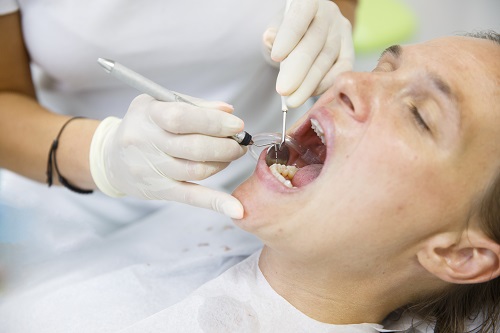When you smile, talk, or chew, you are probably thinking more about your teeth than about your gums. The truth is, though, that gums and teeth work together to promote dental health. From the time the first tooth erupts, all teeth depend on the blood flow provided by the gum tissue.
And, just like teeth, gums can be attacked by harmful bacteria.
Millions of people all throughout the United States have gingivitis, an early-stage infection that can develop into full-blown gum disease. Gingivitis can go unnoticed because the symptoms are relatively mild, including redness and irritation in the affected gum tissue.
Occasional light bleeding of the gums may or may not be present.
Here’s the thing: If gingivitis is allowed to progress to gum disease, it can be very painful.
Sufferers will often notice the difference right away:
- Gum disease usually produces ongoing pain, versus only occasional irritation;
- Gum disease can cause large patches of black, gray, or red gum discoloration;
- Areas with active gum disease may develop lesions that can have discharge.
Gum disease can threaten the underlying bone that anchors teeth and gums in the mouth. The loss of bone is usually permanent, although some cutting-edge treatments can result in limited bone recovery. All in all, it’s best to protect your gums with the help of a family dentist!
Safeguarding Your Gums: Advice from a Santa Cruz Family Dentist
When it comes to the well-being of your mouth, your gums are just as important as any one of your teeth. Brushing your teeth at least twice a day is the most crucial step for defending them. To make them even safer, consider these good dental habits:
Floss Regularly
Flossing can be a tough habit to start, but it is worth it! Much of the damage bacteria can do to gums arises from small food particles left between teeth. If you find regular floss difficult to use, try a soft interdental pick or a water flosser set to a low setting.
Massage the Gums
Massaging your gums can promote better blood flow, which helps support gums’ overall health. You don’t need to use toothpaste while massaging the gums. A soft-bristled manual toothbrush is better than an automatic one, since it will be more gentle.
Many problems with the teeth and gums are hard to spot on your own. They might produce very subtle symptoms at first. In many cases, they will show up in parts of the mouth that you can’t see easily. Visiting a family dentist at least twice a year is the safest way to stay healthy.
Gumline Symptoms? It’s Not Too Late to See Your Friendly Family Dentist
The most common sign of gum problems people notice is bleeding. Bleeding can be prolonged (with a darker red color) or it might show up as a slight pinkish tint when you wash out your mouth. If it happens more than once, set a dental appointment.
For friendly, professional help, contact Landmark Dental Group.









 Web Design by Sleepless Media
Web Design by Sleepless Media